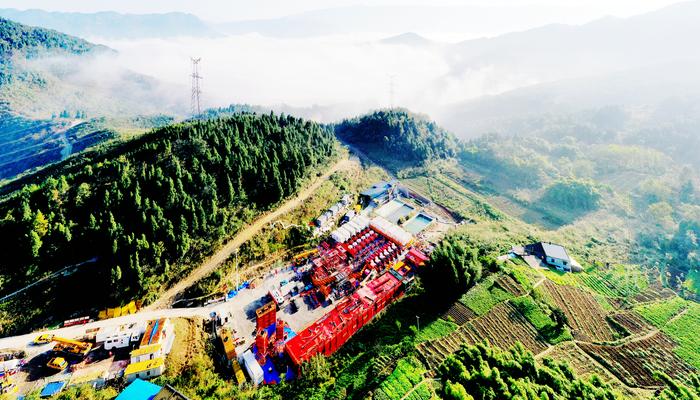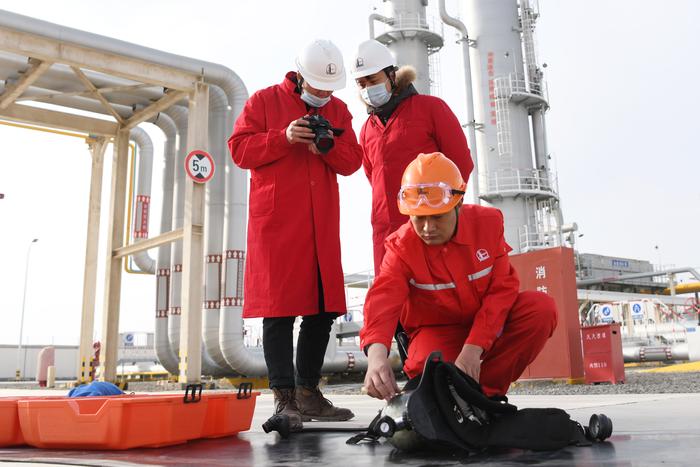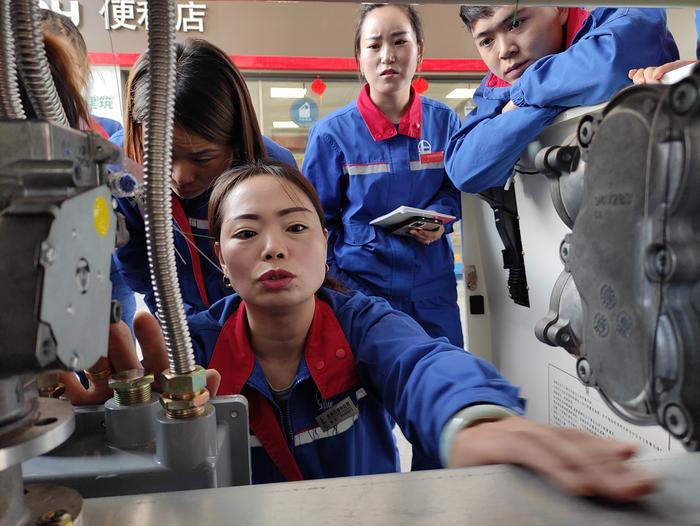|
| 2020-11-26 来源: 中国石化新闻网 |
| 石化新闻 |
中国石化新闻网讯 据11月23日Hydrocarbon Engineering报道,数字化转型可能是为数不多的能帮助油气生产商应对过山车式的快速能源转型和受疫情冲击的市场恢复的有效手段之一。然而,就像任何重大行业转型一样,说起来容易做起来难。 石油和天然气行业论坛,作为最近的自动化展会的一部分,以网络会议方式集合五位行业专家探讨这些问题,并考虑可能的解决方案。 壳牌资深高管、OptilytiX高管弗雷德?沃登(Fred Wasden)表示:“能源行业的转型步伐正在加快,但现在有大量需求遭到破坏,这给人一种与以往不同的感觉。此外,使用数字技术是当下势不可当的浪潮,这些技术在其他行业经过风险测试后才被采用。在招聘和留住员工方面,我们也面临着巨大挑战。这是一个令人兴奋的时刻,但同时会有很多变化。”OptilytiX是一家专注于通过数据分析和能源行业技术实施加速资产价值实现的咨询公司。 首先,人们倾向于关注现有业务的发展。 罗克韦尔自动化公司油气行业顾问Pal Roach补充道:“目前受新冠肺炎疫情冲击导致的最初30%的需求降幅大部分已经恢复,但较疫情爆发前仍下降了5-7%。大多数人估计,由于越来越多的人在家里工作,需求恢复将会很缓慢。与此同时,尽管对航空燃料的需求已经崩溃,柴油燃料却在上升,因为有电商促进货运繁荣。有人估计,未来20年,石油需求将持续下降5-6%,一些炼油厂将不得不关闭。还有人指出,到2040年,炼油行业可能会增长20%,但每年的增幅仍然只有1%。 Pal Roach表示:“炼油是一项独特的业务,对原料或产品的成本几乎没有影响,而且还必须应对许多法规和安全要求,优化流程操作和维护的挑战是寻找更好的原料。由于运营商面临定价压力,炼油服务业在2014年遭受重创,导致一些供应商退出该行业并重新聚焦精力。” 油田设备和服务供应商斯伦贝谢负责数字技术的副总裁Chetan Desai解释道:“这些挑战使得该公司的上游和中游客户更加关注投资组合管理。特别是在过去6周,我们看到了供需失衡,以及效率和成本方面的担忧,这导致人们更加关注创造总价值,与服务提供商更紧密地整合,以扩大质量,并为资产运营商提供更大价值。人们也更加专注于现有业务,而不是在前沿探索新业务。” 其次,油气行业需要引领方向。 为了应对这些重大挑战,专家们报告称,油气行业将需要新的引领方向。Wasden表示:“实际上是从一个着眼于利润和安全的成功愿景开始的,当然,同时也承认温室气体强度也已成为一个前沿和中心指标。这意味着许多领导人将不得不采取比过去更远大的愿景,并使他们的优先事项达到平衡。以前,领导人可能会谈论‘人、地球和利润’,但重点仍然主要是利润。现在,他们必须在各个方面都有所作为。幸运的是,石油和天然气领导人及其组织有办法做到这一点。例如,就像我们使用Waze应用程序在上下班途中导航一样,我们也尝试过类似的软件来帮助油气田作业,它们可以带来一些显著的效果。对许多领导者来说,重点不是发明新的应用程序,而是让现有软件适应他们的工业流程。” 再次,许多能源技术正在向数字化看齐。 Sensiam的首席技术官Andy Weatherhead表示,由于许多潜在的有用技术正在迅速出现,许多相关技术及其体系结构正在融合。例如,网络安全能力正逐渐渗透到许多产品中,这使得这些产品无处不在。许多应用程序正变得越来越虚拟化,同时它们也加入了开源软件社区,如开放式流程自动化论坛(OPAF),或开始使用合适的传感器或无线组件。 Weatherhead补充道:“我们需要了解当今不断变化的技术洪流的目的,并且关注那些能够解决特定问题的技术。真正的问题是变更管理和采纳,以及如何为用户打包和交付解决方案。数字化可以影响许多油气资产从开始生产到结束作业的整个生命周期的方方面面,因此我们必须关注那些可以在这些生命周期中提升业绩的项目。” Roach警告称,这些转变对于工业操作流程应用来说并不容易,因为它们是基于物理环境的。许多工业资产的成本在1亿到2.5亿美元之间,甚至更多,而且工艺非常复杂,以至于很难开发数字化表示,或构建它们的模型,来发现何时需要支持或维护。物理设备的数字孪生设备前期成本也很高,但一旦用户拥有了它们,他们就可以开始跟随物理设备,以更好地执行工程、维护和支持任务,这也是它的优势所在。” 埃克森美孚信息技术公司(ExxonMobil Information Technology)的解决方案架构师Dave Hedge报告表示,数字化转型有三个主要阶段——初始数据收集、获取和学习以及将其应用到实践中,而新冠肺炎疫情加速了数字化转型进程。数字化转型的效果是令人惊讶的,但现在的问题是,如何让所有人都参与进来。因此,需要在从工业流程中提取价值,并重新确定数字化共同愿景。 第三,是投资的数字化转型。 数字化转型的一个关键因素是鼓励运营商、技术人员、工程师、管理人员和其他终端用户接受数字文化。 Desai补充道:“工艺流程操作领域关键还是在‘人’。这些员工要求获得数字化工具,并接受机器学习(ML)和人工智能(AI)的再培训,而他们的公司将需要数字技术来实现这一目标。领导者将不得不保持敏锐和开放意识,用数字技术来吸引人才。资产价值2000万至5000万美元的用户在手腕上佩戴Fitbit来检测心率,他们也希望在工业作业中使用同样的技术。” Hedge报告称,刚入职的毕业生拥有像Python编程这样的技能,并希望使用它们来改进工艺流程的应用程序,但他们仍然需要得到资深人士和经理的认可,以帮助该领域向前发展。上游、中游和下游用户正在更加密切地关注公司之间移动的数据。 所有这些数据,来自他们的办公场所和各个平台,而数字化可以帮助这些公司挖掘数据价值。这也是为什么是时候投资也要向数字化转型了。投资的快速回报总是需要的,但用户可以通过数字化获得一些速战速决的胜利,并将其作为过渡的基础。只需要做一些初始的步骤。这些业务仍然需要赚钱,而数字化可以增加利润。” 王佳晶 摘译自 Hydrocarbon Engineering 原文如下: Oil and gas panel tackles energy transition, digital challenges Digital transformation may be one of the few saving graces that can help oil and gas producers cope with their roller-coaster, rapidly transitioning and COVID-19-impacted markets. However, as with any big shift, it is easier said than done. "The pace of transition in the energy industries is accelerating, but there's also a lot of demand destruction now, which has a long-term feel that makes it different than previous events," said Fred Wasden, Shell veteran and managing member at OptilytiX, a consultancy focused on accelerating asset value realisation through data analytics and technology implementation for the energy industry. “The second trend is an overwhelming surge of digital technologies by process-industry users, which are being adopted after being risk-tested in other industries. We're also facing a big challenge in recruiting and retaining staff. It's an exciting time, but it's a lot of change all at once." Dips inspire refocusing Pal Roach, industry consultant, Oil & Gas, Rockwell Automation, added: "The present situation with COVID-19 is similar to past downturns. Much of the initial 30% dip in demand has been recovered, but we're still down 5 - 7%, and most estimates are that it will be slow to come back because so many more people are working at home. At the same time, even though demand for aviation fuel has collapsed, diesel fuel is up because there are so many Amazon and other trucks driving through neighbourhoods. Some estimates are that demand will remain down 5 - 6% for 20 years, and some refineries will have to close. Others indicate the refining industry may grow 20% by 2040, but this will still be only a 1% increase per year. "This is all impacted by the fact that refining is a unique business, which has little or no influence over the cost of its materials or the products it produces, and also has to deal with many regulations and safety requirements. The challenge is to optimise feedstocks and operations, and seek better performance and maintenance. The service side of refining took a big hit in 2014 due to pricing pressures on operators, causing some providers to exit the industry and refocus." Chetan Desai, vice president of digital technologies at oilfield equipment and services supplier Schlumberger, explained that these challenges are causing the company’s upstream and midstream clients to sharpen their focus on portfolio management. "Especially in the past six weeks, we're seeing supply and demand imbalances, and efficiency and cost concerns, which are leading to an increased focus on total value creation, closer integration with service providers to scale up quality, and delivering greater value to asset operators. They're also focusing more sharply on existing operations, instead of exploring for new ones on the frontier." Need to lead in new directions To address these epic challenges, the panellists reported that new levels of leadership will be required across the oil and gas sector. "This really begins with a vision for success that addresses profit and safety, of course, but also acknowledges that greenhouse gas intensity has become a front-and-centre metric, too,” said Wasden. “This means many leaders will have to adopt broader visions than they have in the past, and bring their priorities into balance. "Previously, leaders might talk about 'people, planet and profit,' but the focus was still mostly profit,” he continued. “Now, they're going to have to deliver on all fronts. Fortunately, there are ways for oil and gas leaders and their organisations to do it. For example, just as we use the Waze app to navigate our commutes, we've tried equivalent software that can help with operating oil and gas fields, and they can deliver some significant benefits. For many leaders, the focus has been less on inventing new applications, and more on adapting existing software to their processes." Aligning with digitalisation Because so many potentially useful technologies are emerging so quickly, Andy Weatherhead, chief technology officer at Sensiam, reported that many of these technologies and their architectures are converging. "For example, cybersecurity capabilities are getting baked into many products, which is making them pervasive," he said. "Many applications are becoming increasingly virtualised at the same time that they're participating in open-source software communities like the Open Process Automation Forum (OPAF), or beginning to use fit-for-purpose sensors or self-organising wireless components." Desai added that one way to organise today's ever-shifting technology deluge is to ask "to what end?" and concentrate only on those that can solve specific problems. "The real problems are change management and adoption, and how to package and deliver solutions to users," explained Desai. "Digitalisation can affect all the pieces in the full, cradle-to-grave lifecycle of many hydrocarbon assets, so we have to focus on the ones that can uplift performance across those lifecycles." Roach cautioned these shifts aren't easy for process applications because they're so firmly based in physical settings. "Many process assets cost US$100 million to US$250 million or more, and are so complex that it's hard to develop digital representations, or build models of them that can indicate when they need support or maintenance," said Roach. "Digital twins of physical equipment are also costly up front, but once users have them, they can start to follow their physical counterparts for better performance of engineering, maintenance and support tasks. This is likely where most of the benefits will occur." Dave Hedge, solution architect at ExxonMobil Information Technology, reported there are three main phases of digital transformation - initial data collection, taking and learning, and applying it back in the field - and that COVID-19 has accelerated all of these initiatives. "It's amazing what digital transformation can do, but the question suddenly became 'how can we get everyone onboard?' So, we need to get back to deciding on a common vision about what we need digitalisation to do based on extracting value from our processes." Culture lubricates, invests in transformation The panellists unanimously agreed that a critical ingredient of digital transformation is encouraging cultural acceptance by operators, technicians, engineers, managers and other end users. "The process operations landscape is still all about people," added Desai. "These staffers are demanding access to digitalised tools and retraining for machine learning (ML) and artificial intelligence (AI), and their companies will need digital dexterity to make it happen. Leaders will have to ask if their organisation are agile enough and open to these changes. We all need to get proficient at using them. It's no longer enough to just be good: digital technology is needed to attract talent. Users running US$20 - 50 million assets have FitBits on their wrists checking their heart rates, and they want the same technologies for their operations." Hedge reported that recent graduates coming into the process industries have skills like Python programming, and want to use them to improve process industry applications, but they still need acceptance from veterans and managers to help the field move forward. "Upstream, midstream and downstream users are looking more closely at the data moving across their companies," added Hedge. "They want to 'see the molecules' moving from production to customers. All that data, from their premises and platforms, is coming in waves, and digitalization can help organise it. "This also is why it's time to invest in digitalisation. Fast return in investment is always needed, but users can get some quick wins with digitalisation, and use them as a foundation for transitioning to a new world. We just need to make a few initial steps to get started. These are businesses that still need to make money, and digitalisation can add to those bottom lines." |








